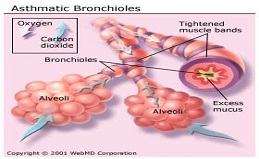
Ismé M. De Kleer
Erasmus Medical Center, Netherlands
Title: The early origins of allergic astma in the developing lung
Biography
Biography: Ismé M. De Kleer
Abstract
Allergic diseases have their origin in early life when lungs and immune system are still developing. Sensitisation to aeroallergens is an important risk factor for asthma in children and influenced by genetic polymorphisms. Ontology of asthma genes indicate the existence of two central themes conferring asthma susceptibility, (i) activation of an innate immune response leading to type-2 immunity (IL33 and IL1RL1, coding for IL-33R and decoy receptor sST2) and (ii) integrity and repair of the airway epithelium (PCDH1 and CDHR3).

To understand the susceptibility to allergic asthma of young children we studied epithelial permeability and innate and type 2 immunity in response to house dust mite (HDM) exposure in neonatal mouse lungs. Ad (i) we found that innate lymphoid type 2 cells (ILC2) and eosinophils spontaneously accumulate in lungs during postnatal alveolarization in an IL-33 dependent manner. HDM exposure further increased IL-33, boosted cytokine production in ILC2, and promoted the migration and Th2 skewing capacity of dendritic cells leading to enhanced sensitization (Immunity, dec 2016). Ad (ii) we found that exposition to high dose HDM resulted in free flow of antigen through the epithelial barriere to the lung draining lymph nodes. This phenomenon was the result of an impaired alveolar barrier due to claudin-18 deficiency expression in alveolar cells. Challenges with high doses of antigen resulted in strong T cell proliferation in lung interstitium and lymph nodes and dendritic cell independent sensitization.
We conclude that enhanced neonatal Th2 skewing to inhaled allergens occurs during a phase of postnatal lung remodeling, when the epithelial barriere is not competely closed and the IL-33 axis and spontaneous type 2 immunity drive immunity to allergens.

